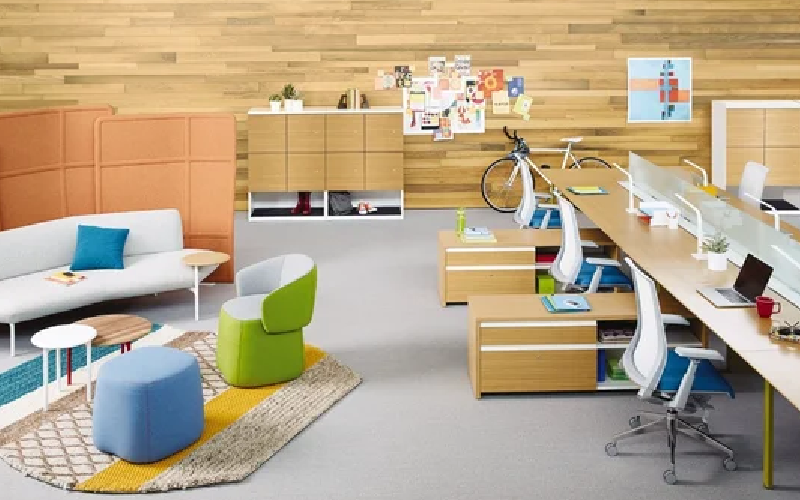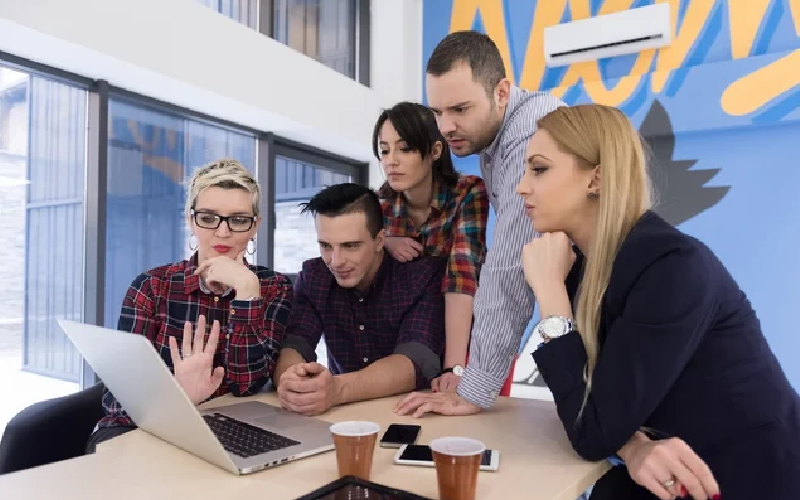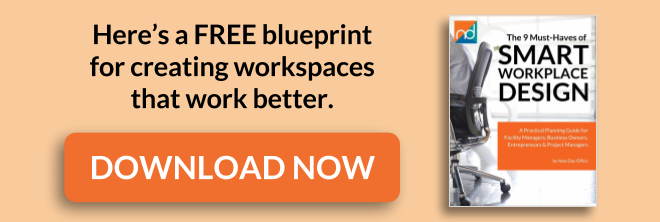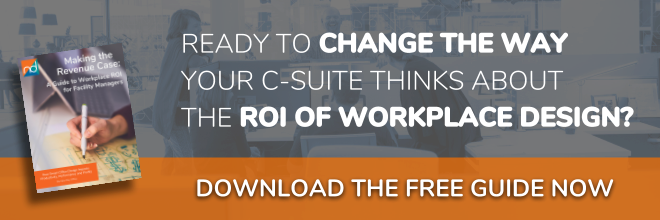Office Design Trends: 5 Big Ideas to Help You Build a Better Workplace
By Matt Brady

You hear a lot of talk these days about “the workplace revolution.”
Those words bring up images of employees revolting, tearing down old cubicle walls and rushing into corner offices with pitchforks and torches. It all sounds so spontaneous and dramatic like the culture of the American office changed overnight.
But things didn’t happen quite that way.
It’s been more of a gradual change, triggered by new generations joining the workforce, advances in technology and shifts in society and corporate culture.
What does this mean for your next workplace design?
It means that creating your space has become much more complicated than just filling an empty space with desks and chairs. Modern work environments have evolved beyond cube farms and rows of private offices. Offices are more open, active and fluid. Employees have more choice and control.
The good news is that great design is no longer seen as a luxury.
But what if you’re a facilities manager or project lead who doesn’t consider yourself a designer?
Don’t panic. The key to designing smarter, more productive spaces starts with insight.
If you’re planning a new workspace or contemplating a change, here are five big ideas that are changing the modern office and how you can use them in your next design.

Your business purpose drives design.
THE BIG IDEA: Business purpose is the heart and brains of your organization and your workplace is the rest of the body. All of your parts need to work together. A great design should be inspired and informed by your business culture, mission and purpose. The goal of your physical space is to make your business better in every way.
HOW TO USE IT: Don’t start with the space. Don’t start with the furniture. Start with your business. Kick off the planning process with a conversation that involves everyone from the top leadership to the end-users. Ask big questions about vision, process and purpose that will help build a consensus for the goals of your design.
Adaptability is not a luxury.
THE BIG IDEA: Business and technology are changing fast. If you design without considering the future, you’ll struggle to keep up. Starting over from scratch every few years will cost you time and money. Your space needs to be able to adapt and react quickly. It needs to grow, shrink, shift and evolve.
HOW TO USE IT: Plan for cost-effective expansion with reconfigurable spaces. Take advantage of options like demountable walls and customizable furniture. Choose pieces that can adapt to changes in hardware and remember to always build in excess capacity for future technology upgrades.
Office furniture is an asset.
THE BIG IDEA: For decades, businesses saw office furniture as an expense, just another cost of doing business. Many companies cut corners by choosing low-cost furniture options but soon came to realize that there’s nothing more expensive than a cheap office chair. Today, more businesses are reaping the long-term, economic benefits of starting with better products, prioritizing durability and replacing items less often.
HOW TO USE IT: Focus on value over cost. Improve the lifetime value and ROI of your office furniture by choosing quality furnishings that come with maintenance plans, warranties and obsolescence protection.

People-centric workspaces work better.
THE BIG IDEA: Companies are driven by people. Technology gives today’s knowledge workers greater leverage and choice in where and how they work. The most successful spaces consider the needs of today’s diverse workforce and provide a healthy, engaging workplace. 90% of respondents to a Gensler U.S. Workplace study believe that better workplace design and layout result in better overall employee performance.
HOW TO USE IT: Design for human beings by considering a wide range of factors from activity and aesthetics to noise and natural light. Understand your workforce beyond generational differences to account for life stage, job function and work style. Don’t make efficient decisions at the expense of emotions and employee well-being.
Well-designed office environments can boost revenue.
THE BIG IDEA: Well-designed workplaces can actually help generate revenue by increasing daily productivity, reducing turnover and boosting employee morale. Companies are discovering value in applying the ideas of lean management to office design. Smart workplace design is like “human logistics,” creating a more productive pattern of movement and process in the same way that information speeds across optimized IT architecture.
HOW TO USE IT: The strategy and planning process for new spaces can reveal key insights about how to maximize efficiencies and flow. Spend more time early to save money and effort later. Always begin with leadership in the loop. Revisit the other big ideas in this list and you can start to re-engineer spaces, eliminate “wasted” space and create the kind of workplace that will transform your business.


